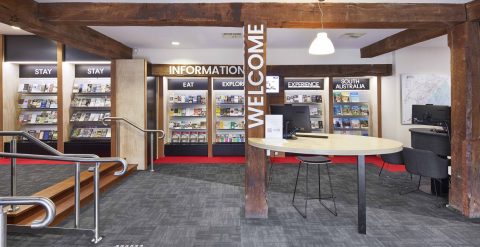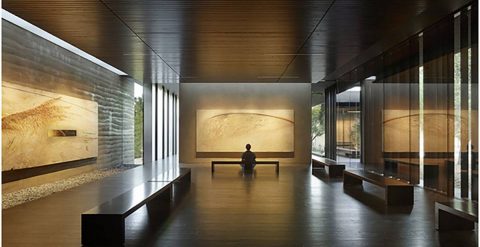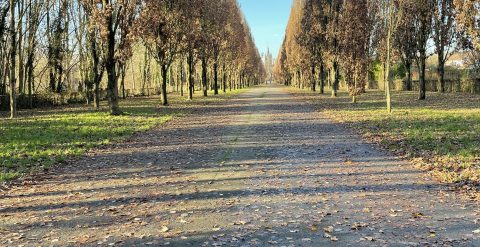
Wine, Unfiltered: Designing for the Next Generation
The world of wine is changing. You can feel it. Not just in the way it’s marketed, but in the way people are drinking it, talking about it, and walking into the spaces where it’s made. And if you work in or around wine, you already know: the old rules aren’t cutting it.
At a recent Wine Communicators SA panel—“Exploring Innovative Connections: Engaging with the Next Generation of Wine Drinkers”—a mix of young wine professionals, academics, creatives, and business owners got real about what’s working, what’s not, and what the future might look like if we start to meet this next generation where they actually are.
The big takeaway? It’s time to strip back the polish and start leading with personality.
Relatability Over Refinement
Millennials and Gen Z aren’t looking for a crash course in Bordeaux classification or a sommelier’s cheat sheet. They’re curious about wine—but they want to discover it on their own terms. That means they’re seeking out authenticity over expertise, connection over connoisseurship.
As one panellist put it, “Wine is a tradition, but it’s also a living, breathing part of modern life. We need to make it feel human again.”
That means letting go of the idea that wine has to be presented in a perfect package. The younger generation isn’t interested in being impressed—they want to be included.
From Telling to Inviting
The old-school marketing playbook—brochures, tasting notes, lectures at the bar—isn’t sparking curiosity anymore. This generation is experience-driven. They don’t want to be told what to taste or how to feel. They want to find that out for themselves.
What’s resonating now is storytelling. Real stories, from real people, about why they do what they do. Not just the what, but the why—the quirks, the mess, the moments that make it personal.
It also means playfulness. Games, interactions, sensory prompts that get people thinking without telling them what to think. Maybe it’s a guessing challenge about varietals, a blind aroma station, or a playful take on food pairing. When it’s done well, these are more than gimmicks—they become real moments of learning and connection. Not a lecture. Not a wine exam. Just a chance to slow down and notice what’s in the glass.
Breaking Down the Barrier
Wine has long been wrapped up in a sense of exclusivity. Whether it was intentional or not, the industry built a wall around itself—and now it needs to dismantle it. If wine is going to stay relevant, it needs to become more accessible, less intimidating, and a whole lot more flexible.
Young consumers want to bring their own identity, culture, and preferences into the experience. They’re not asking for permission. They’re asking for space to belong.
And that’s where design can do some of the heavy lifting.
Architecture as Experience
The places where we drink, buy, and learn about wine matter. The cellar door isn’t just a retail space—it’s the physical expression of a brand, but also a place to truly engage and be immersed in it. It’s where visitors start to form an emotional connection—not just to your product, but to your story, your values, and your people.
Whether it’s an old shed reimagined for tastings, a bold immersive room that plays with light and scent, or a purpose-built experience centre that brings people deep into the landscape—these spaces should do more than look good. They should invite people in, make them feel something, and leave them talking about it long after they leave as an experience, not a lecture – the best spaces feel like an invitation, not an instruction.
Invest Where it Matters
Let’s be clear: this isn’t about spending less. It’s about spending smarter.
Yes, we want you to invest—seriously. But let’s put that investment into the things that actually make a difference: storytelling, experience design, architectural moments that invite people to stay longer, come back sooner, and become not just customers, but advocates.
Whether it’s designing a space that extends the average visit from 20 minutes to 90, or creating interactive installations that have people talking about your brand for weeks, these are not just “nice-to-haves.” They are smart commercial decisions.
Done right, these experiences drive wine sales, event bookings, loyalty, and tourism buzz. They increase average spend. They encourage people to bring their friends next time. They turn visitors into brand ambassadors—and in some cases, into industry advocates.
That’s not marketing fluff. That’s strategy. And architecture can deliver it.
Every Touchpoint Matters
Younger audiences can smell inauthenticity a mile off. They don’t want a polished script—they want a real connection. So whether it’s your Instagram feed, your label, your website, or your cellar door—if it’s part of how someone meets your brand, it needs to feel connected. Visually. Emotionally. Experientially.
Whether someone walks into your cellar door or scrolls past your reel at 11pm, they’re asking the same thing: Is this for me?
Design—physical and digital—should answer that question with a clear, resounding yes.
Digital Can’t Be an Afterthought
Yes, this generation lives online. But that doesn’t make the physical experience irrelevant—if anything, it means we have to work harder to make it memorable.
The challenge is not choosing between digital and physical—it’s designing both as part of the same story. Your digital platforms need soul. And your physical spaces need that same clarity and character people saw online. When someone finally makes the trip to visit you in person, it should feel like stepping into the world they already glimpsed.
The End Game Is Advocacy
This isn’t just about short-term sales. It’s about the long game—creating experiences that stick in people’s memories, that they bring their friends to, that they associate with joy, ease, and belonging. Whether it’s a casual tasting that turns into a two-hour stay, or a sensory game that helps someone discover something new about their palate—these moments build trust. They grow brand loyalty. They create industry advocates.
How the Future is Won
Less polish, more personality—that’s not just a tagline. It’s a mindset shift.
This new generation isn’t looking to be impressed. They’re looking to connect—with the people, the place, and the story behind the glass.
When we design for them, we’re not just adapting to a trend. We’re shaping what wine can be: more open, more human, more alive.
That’s how advocacy starts. And that’s how the future is won.
We’re pretty good at getting to the heart of a place—and turning that essence into something you can see, touch, and experience in 3D. If you’re thinking about how to express your brand’s personality and style, our quick quiz is a great place to start. Or skip the quiz—drop us an email, give us a call, and let’s just start with a coffee.





